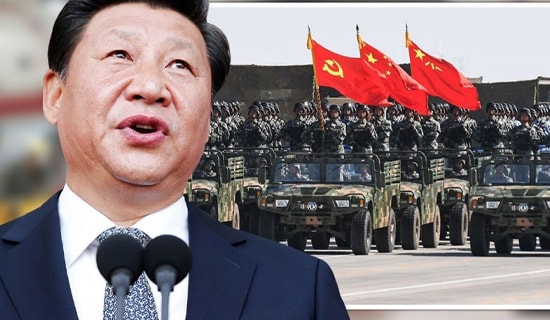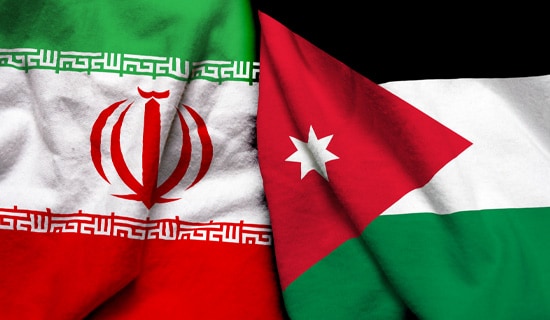As the world was focused on the Winter Olympics in Beijing and the imminent Russian invasion of Ukraine, the White House published its Indo-Pacific Strategy of the United States on February 11.[1] Purportedly, the release of the strategy was meant to coincide with U.S. Secretary of State Antony Blinken's travel through the region including his participation in a Quad Ministerial meeting in Melbourne, Australia. Moreover, the timing was meant to convey that the United States can, in fact, still walk and chew gum at the same time despite whatever crisis du jour may be occupying the headlines. Yet, the Indo-Pacific Strategy landed with somewhat of a thud not because of what was in it, but what appears to be missing. Specifically, an overt and transparent call to continue the strategic competition with China. Similar to the 1992 U.S. presidential election when political observers noted "it's the economy, stupid," it's quite plausible that many regional experts today are reacting to the newly released Indo-Pacific Strategy with "it's China, stupid!"[2]

Unlike the Biden Administration's Indo-Pacific Strategy, the National Security Strategy of 2017 and the National Defense Strategy of 2018 clearly declared that we are in an era of great power competition and articulated an American vision to compete, deter, and win against revisionist competitors such as China (and Russia). Instead, the Indo-Pacific Strategy appears to walk away from competition, at least rhetorically. There are only three references to competition in the document. In recent years, U.S. leadership in confronting Chinese aggression, assertiveness, and adventurism through competition rallied much of the Indo-Pacific region as well as other democratic partners and allies worldwide. The use of the term "competition" was a useful tool in aligning approaches to contend with a China that was positioning and posturing to upend the global norms that have been in place since the end of World War II and have served as a foundation of stability, security, and prosperity. Arguably, the competitive approach was resonating and working in solidifying an international response opposed to the Chinese Communist Party's (CCP) ambition for a new world order guided from the leadership compound in Zhongnanhai.
The Biden Administration had previously used the term "competition" relatively routinely in describing the bilateral relationship. For instance, President Biden on April 28, 2021 told a joint session of Congress, "We're in competition with China and other countries to win the 21st century."[3] On March 3, 2021, Secretary Blinken said: "Our relationship with China will be competitive when it should be, collaborative when it can be, and adversarial when it must be. And we will engage China from a position of strength... China is the only country with the economic, diplomatic, military and technological power to seriously challenge the stable and open international system – all the rules, values and relationships that make the world work the way we want it to."[4] Earlier, on January 25, 2021, White House Press Secretary Jennifer Psaki said: "We're in a serious competition with China. Strategic competition with China is a defining feature of the 21st century."[5]
Specific reference to China is also remarkedly lacking from the Indo-Pacific Strategy. Other than in two paragraphs of the preface, there is scarce mention of the People's Republic of China (PRC) and no mention of the CCP whatsoever. While "the PRC's coercion and aggression" is rightfully noted, the Indo-Pacific Strategy needlessly states that "our objective is not to change the PRC." While a regional strategy should not only focus on one issue or one country, the outsized role of malign Chinese activities that have had an overwhelmingly negative impact on most countries' security interests in the region certainly warrants a central role in any strategic document. Across the entirety of the Indo-Pacific, China's stated ambitions and strategies as well as their observable actions whether they be in Hong Kong, the South China Sea, the Senkakus, Ladakh, the air and sea around Taiwan – to name just a few – have underscored their counter-normative behavior backed by an increasingly capable military and powerful economy that advances the CCP's no-holds-barred objectives.
The tone and tenor of the Biden Administration's Indo-Pacific Strategy vis-à-vis China has markedly changed from the previous administration's pronouncements as well as that of allied countries. The Indo-Pacific Strategy has dialed back a focus on China that was tacitly endorsed by most Americans and allies worldwide. Instead, it lumps China into the same category as "the climate crisis, and a pandemic."[6] Paradoxically, over the past year, the Biden Administration had been quite strident in its rhetoric, almost Trumpian, in calling out the China threat. The President stated on March 25, 2021, that "China has an overall goal... to become the leading country in the world, the wealthiest country in the world, and the most powerful country in the world... That's not going to happen on my watch because the United States is going to continue to grow."[7] Secretary Blinken during a CBS 60 Minutes interview in referring to China said, "It is the one country in the world that has the military, economic, diplomatic capacity to undermine or challenge the rules-based order that we care so much about and are determined to defend."[8] During his Senate confirmation hearing, Director of Central Intelligence William Burns said, "I think the evolutions of Xi Jinping's China over the last six or seven years has been a very sharp wake-up call... The kind of aggressive, undisguised ambition and assertiveness I think has made very clear the nature of the adversary and the rival that we face today."[9] He went on to say: "An adversarial, predatory Chinese leadership poses our biggest geo-political test."
Readers of the Indo-Pacific Strategy find themselves wondering why the apparent devolution in rhetoric within the Biden Administration? Is it meant to distance itself from its predecessors? That would certainly not come as a surprise, but does not explain the previous alignment of Biden Administration talking points with that of the Trump Administration on China. Is the Indo-Pacific Strategy intended to introduce a new approach such as shifting from confronting China directly to working behind the scenes with partners and allies, the so-called "leading from behind" approach? If yes, this would certainly leave key allies in the region, namely Japan and Australia, somewhat in the lurch given that their policies and public statements have been much more forward leaning in the last two to three years regarding how they arrayed themselves against the PRC. More worrisome perhaps, is it meant to signal a return to quixotic attempts to shape the PRC into being a "responsible stakeholder?" That did not work when China's comprehensive national power was less than it is now. While cooperation with China should not be discounted nor rejected, the realpolitik of today necessitates a clear-eyed realization that the PRC poses the generational challenge of the 21st century and no matter how much we want to sugarcoat it, CCP aggression and assertiveness will not be stymied by a softening of language in U.S. strategic documents.
SUPPORT OUR WORK

Some of the aforementioned questions arise because the Indo-Pacific Strategy today remains a stand-alone document. The Biden Administration's strategic perspective on and approach to the Indo-Pacific is certainly something that much of the world has anxiously anticipated. Yet, it is difficult to fully evaluate and interpret it without the normal retinue of preceding strategic documents which provide a larger context within which the Indo-Pacific Strategy should fit. The Biden Administration has yet to publish a National Security Strategy (NSS), notwithstanding the Interim National Security Strategic Guidance published in March 2021, nor a National Defense Strategy (NDS). Usually, strategic documents are nested within one another. For instance, an NSS is followed by an NDS and regional strategies are released (or not released, if only classified versions exist as was the case for the Trump Administration's U.S. Strategic Framework for the Indo-Pacific, declassified on January 5, 2021). Such a deliberate sequencing of strategies allows for a global foundation within which regional frameworks can then be nested. After almost 14 months in office and with the forces of authoritarianism on the march all over the world, it is high time for the Biden Administration to publish a NSS and a NDS so that friends and foes alike know America's intent.
At the risk of appearing hyper-critical and somewhat fastidious, it also bears mentioning that the outlined elements of the Indo-Pacific Strategy are not doctrinally, bureaucratically, or procedurally correct. Strategy is defined by ends, ways, and means.[10] The strategic ends in the Indo-Pacific Strategy are defined as "Advance a free and open Indo-Pacific that is more connected, prosperous, secure, and resilient." [11] While on its face laudable, "advance" or any other action is not an end in and of itself. Ends are strategic outcomes or a desired end state. Thus, as a component of a strategy, an end must be a conclusion, a state of being, or a determined outcome. Citing an on-going action as the strategic ends in the Indo-Pacific Strategy is at best, confusing, and at worst, destabilizing, as it does not convey clear guidance to what the U.S. is trying to achieve in the region.
Last week, 50 years ago, President Richard Nixon was the first American President to visit the PRC. It was indeed a historic moment motivated in large measure by the exigencies of the Cold War. The resultant Shanghai Communique remains integral to the U.S.' One China policy. However, the China of today bears little resemblance to that of 1972. Most saliently perhaps is that Chinese outward bellicosity has become so pervasive that the Taiwan Relations Act and the Six Assurances are now more relevant than ever and should be guideposts, warranting more than mere passing mention, for U.S. strategy in the Indo-Pacific as they actually reflect upon our leadership beyond the Taiwan Strait. America's continued role in the Indo-Pacific and the future of democratic values and interests demand a clear clarion call to compete and confront the PRC wherever needed while keeping the door open for those limited areas in which we can cooperate. Unfortunately, the Indo-Pacific Strategy does not accomplish this. Let us hope that the Biden Administration's future strategic documents do a better job as the world is watching because whether we want it to be or not, in the Indo-Pacific, "it's China, stupid!"
*Heino Klinck is a Member of MEMRI's Board of Advisors. He served as the U.S. Deputy Assistant Secretary of Defense for East Asia, 2019-2021. As an Army Foreign Area Officer, he served as a military attaché in China, 2004-2010.
[1] The White House, The Indo-Pacific Strategy of the United States, whitehouse.gov/wp-content/uploads/2022/02/U.S.-Indo-Pacific-Strategy.pdf, February 2022.
[2]The phrase "it's the economy, stupid!" was coined by a key political strategist on Bill Clinton's successful 1992 campaign for the presidency suggesting that the incumbent was tone deaf to the issue of the day, namely the economy. I would argue this is an appropriate analogy to the apparent lack of focus on the People's Republic of China within the current Indo-Pacific Strategy and it will be ridiculed similarly.
[3] Whitehouse.gov/briefing-room/speeches-remarks/2021/04/29/remarks-by-president-biden-in-address-to-a-joint-session-of-congress, April 28, 2021.
[4] State.gov/a-foreign-policy-for-the-american-people, March 3, 2021.
[5] Whitehouse.gov/briefing-room/press-briefings/2021/01/25/press-briefing-by-press-secretary-jen-psaki-january-25-2021, January 25, 2021.
[6] The White House, The Indo-Pacific Strategy of the United States, op. cit., p. 6.
[7] Whitehouse.gov/briefing-room/speeches-remarks/2021/03/25/remarks-by-president-biden-in-press-conference, March 25, 2021.
[8] State.gov/secretary-antony-j-blinken-with-norah-odonnell-on-cbs-60-minutes-and-60minutesovertime-com, May 2, 2021.
[9] Washingtonexaminer.com/news/biden-cia-nominee-william-burns-china-confucius-institutes, February 24, 2021.
[10] Joint Doctrine Note 1-18, Strategy provides a solid primer on the appropriate role of ends, ways, and means in strategy as well as other relevant references. Jcs.mil/portals/36/documents/doctrine/jdn_jg/jdn1_18.pdf?ver=2018-04-25-150439-540, April 25, 2018.
[11] The White House, The Indo-Pacific Strategy of the United States, op. cit, p. 10.




